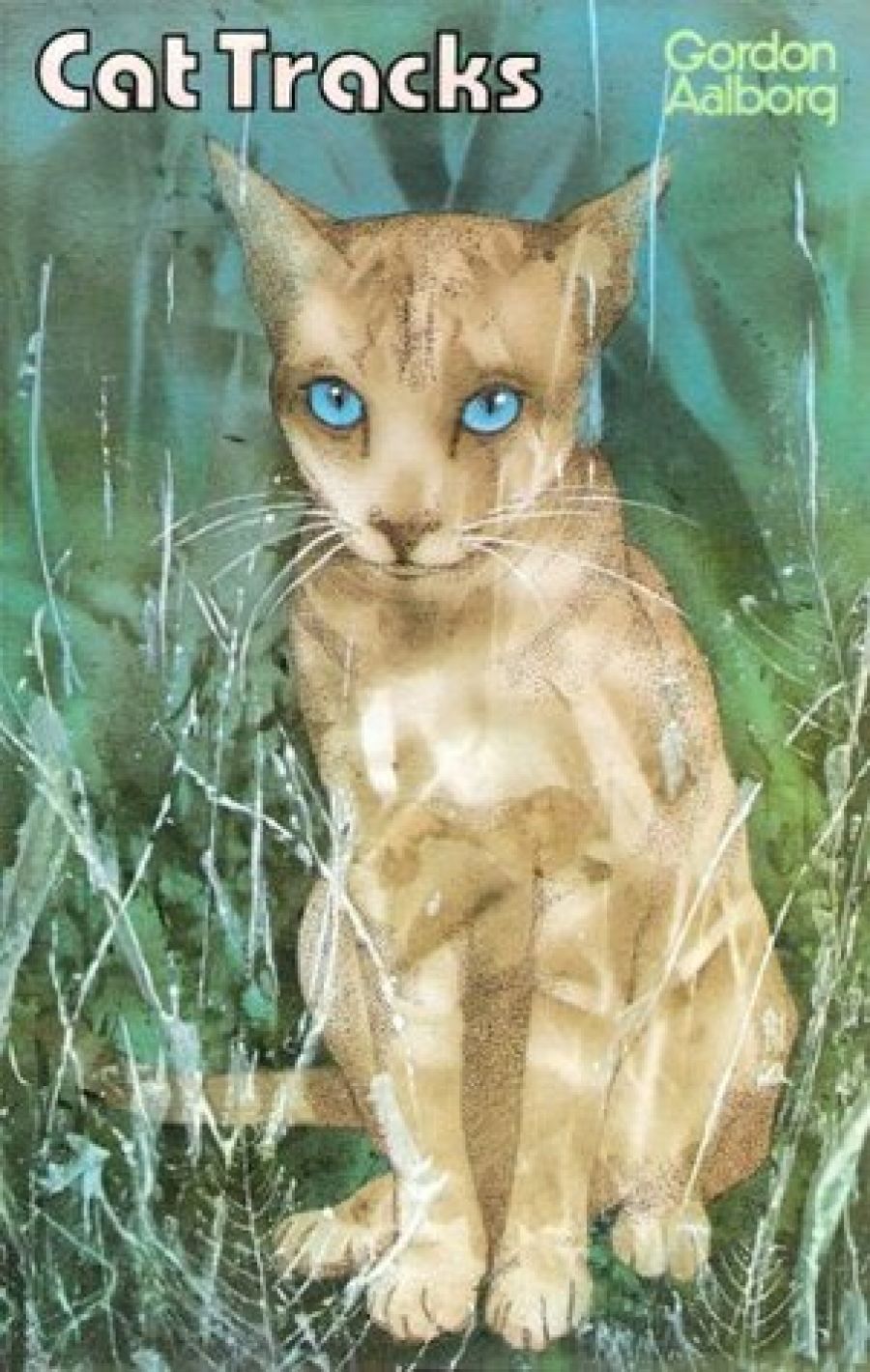
- Free Article: No
- Contents Category: Fiction
- Review Article: Yes
- Article Title: Exotic wildness
- Online Only: No
- Custom Highlight Text:
Cat Tracks was originally intended as a novel for young people. It has, however, attracted a wider audience, partly because of its well-constructed story and partly because of its excellent presentation of an important conservation problem.
- Book 1 Title: Cat Tracks
- Book 1 Biblio: Hyland House, 136 pp, $9.95
If it can be said that a feral animal is ‘an animal in the wrong place’, then it is necessary to supply a touchstone to make the definition applicable in a practical sense. In Australia that touchstone for placental animals – apart, apparently by virtue of long residence, from man and the dingo – is whether or not an animal is a marsupial or a monotreme.
The cat is an excellent subject for a book about the problem caused in Australia by ferality: a problem that has been created by the introduction of both plants and animals, ranging from the blackberry to the wild pig.
Feral cats have obvious destructive potential, feral wildness, and clear alienation from the bush. The cat forever ‘walks by itself and all paths are alike to it’.
Gordon Aalborg has drawn an accurate and compassionate picture of the life cycle of the feral cat in Australia. It feels for the heroic and tragic efforts of all animals in their fight for survival and is thus squarely in the tradition of Man-shy and The Silver Brumby. At the same time, it fairly and objectively sheets home criticism of Australians and, by implication, the inadequacy of official and institutional structures to deal with the urgent problems of ferality in this country.
If there must be criticism of the book, it is that there is inadequate resolution of the differences between the ‘native wildness’ and the ‘feral wildness’ of an animal. It is stated that the Australian feral cat is as wild as the European wild cat. This is not true. Felis silvestris is a genuine native wild animal of Europe. Felis catus (the Australian feral cat) is the domestic cat gone wild.
Such criticism may seem carping, but I believe that the difficult problems of speciation, ferality, and ‘wildness’ are too important to be treated casually, particularly when the book is ‘a must’ for all school libraries.


Comments powered by CComment